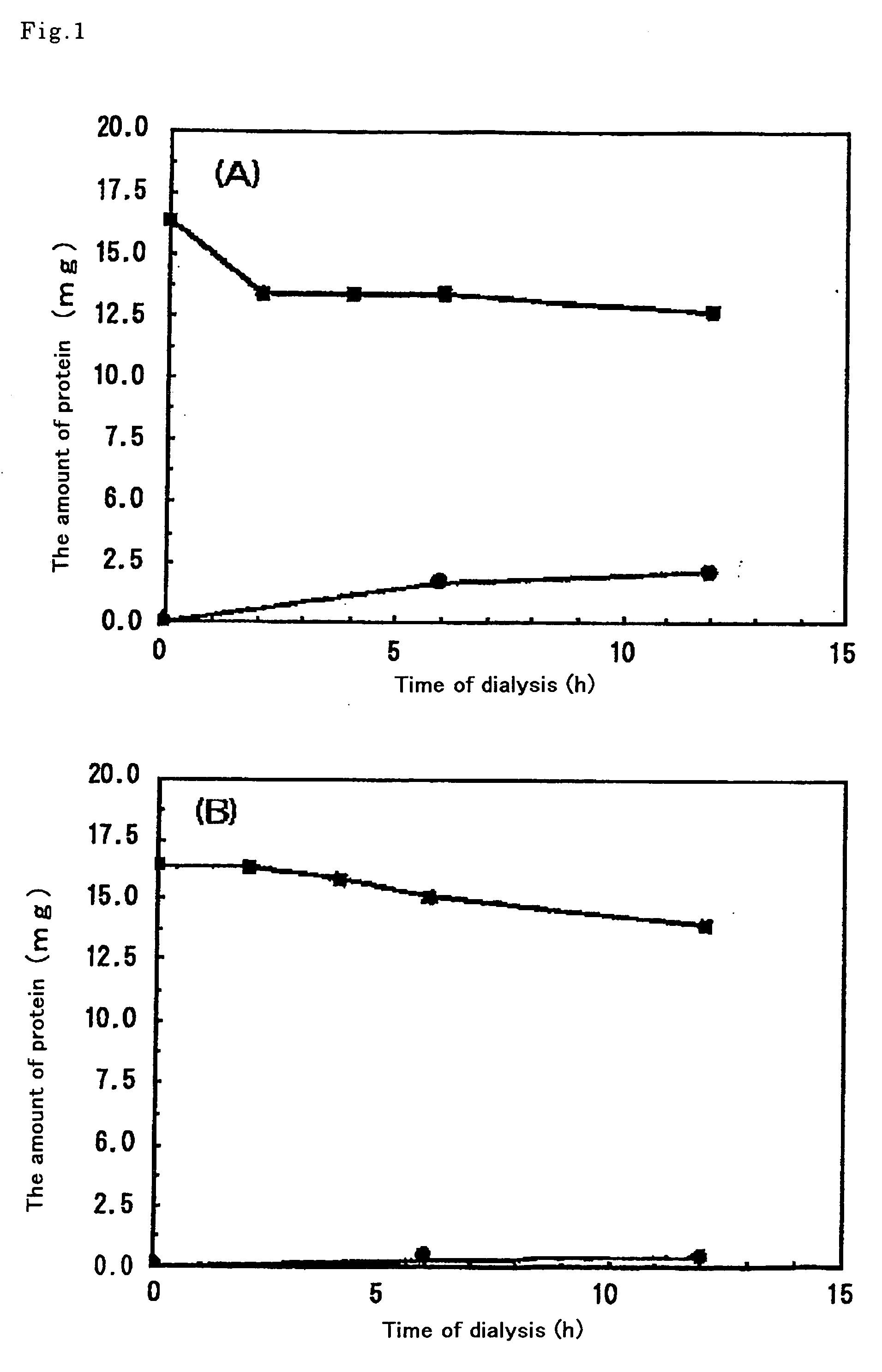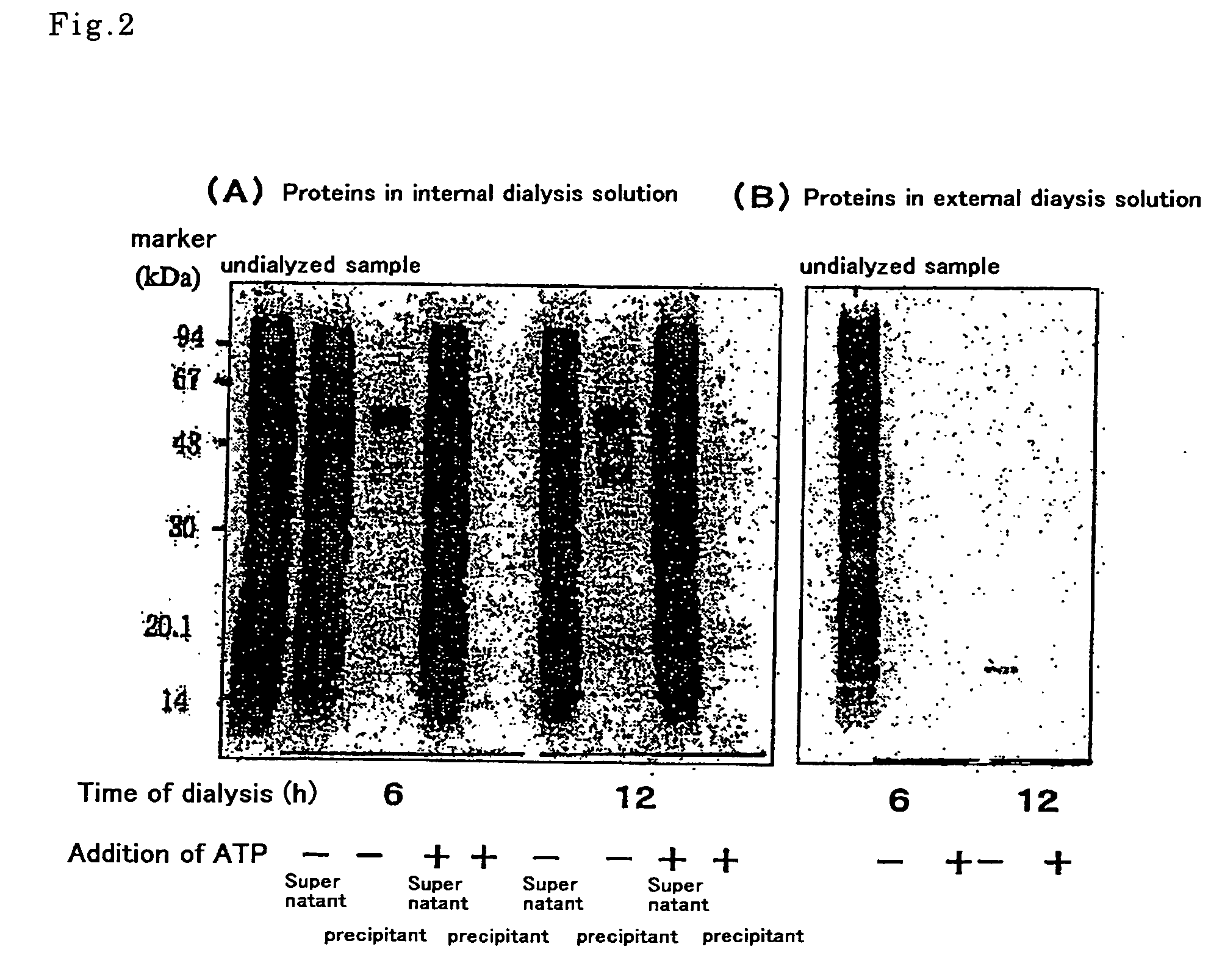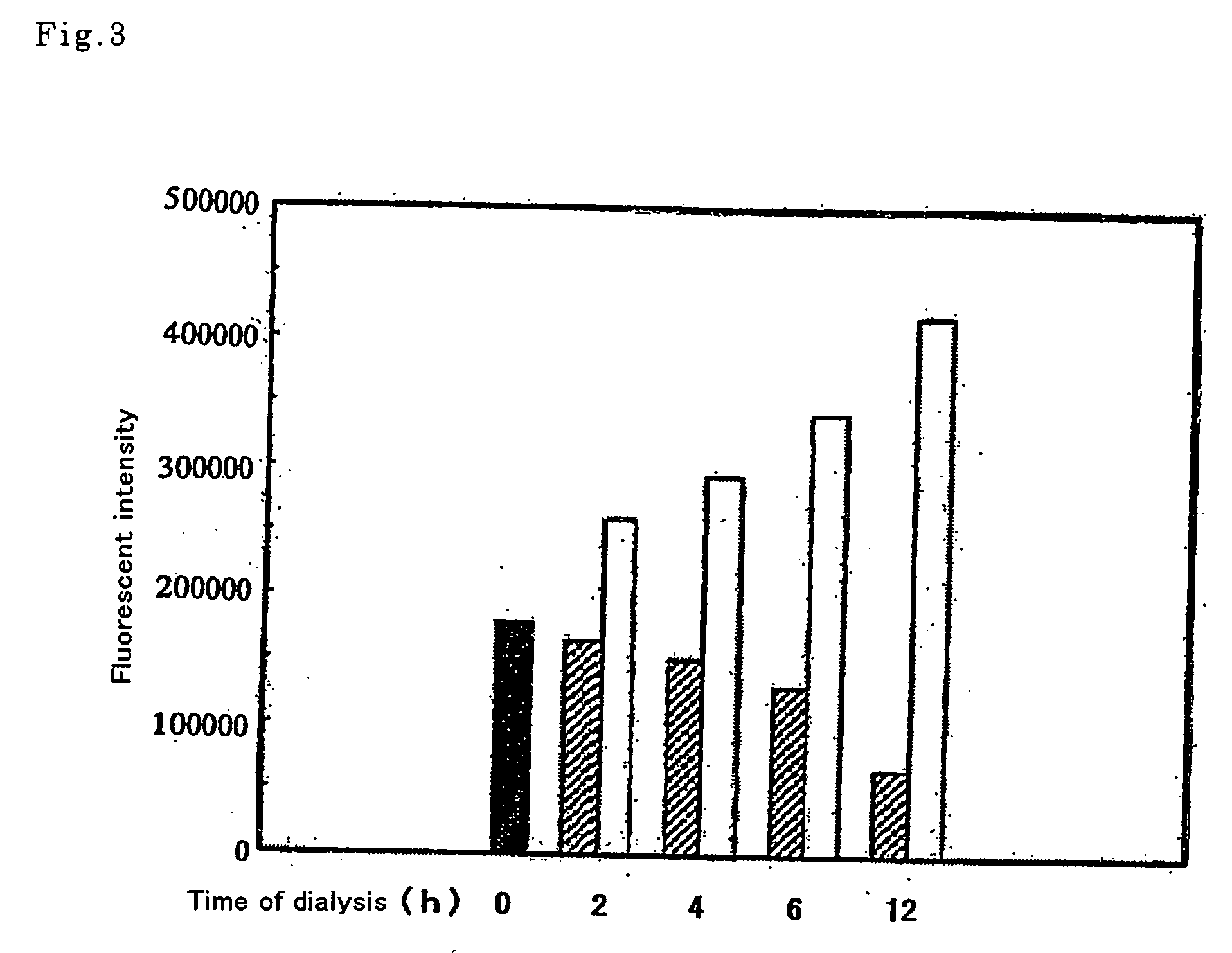Cell extract for cell-free protein synthesis and process for producing the same
a cell extract and protein synthesis technology, applied in the field of cell extracts, can solve the problems of limited exogenous proteins that can be produced by these methods, international regulations will become even stricter, and the chemical synthesis of higher molecular weight proteins is currently extremely difficult, so as to improve the activity of low protein synthesis, and improve the efficiency of synthesis
- Summary
- Abstract
- Description
- Claims
- Application Information
AI Technical Summary
Benefits of technology
Problems solved by technology
Method used
Image
Examples
example 1
Preparation of Wheat Embryo Extract
[0091] Hokkaido Chihoku wheat grain (undisinfected) was added to a mill (Fritsch: Rotor Speed Mill Pulverisette 14) at a rate of 100 g per minute, and the grain was moderately ground at a rotation speed of 8,000 rpm. After recovering a fraction containing germinatable embryos with a sieve (mesh size 0.7 to 1.00 mm), the surfacing fraction containing the germinatable embryos was recovered by flotation using a mixture of carbon tetrachloride and cyclohexane (volume ratio=carbon tetrachloride: cyclohexane=2.4:1), the organic solvent was eliminated by desiccation at room temperature, and then impurities such as seed coat were eliminated by air-blowing at room temperature to obtain a crude embryo fraction.
[0092] Next, a belt type color sorter BLM-300K (Manufacturer: Anzai Manufacturing Co., Ltd., Marketed by Anzai Co., Ltd.) was used to select the embryo from the crude embryo fraction by way of color difference, in the following manner. This color sor...
example 2
Elimination of Low Molecular Weight Substances From Wheat Embryo Extract and Analysis of Protein Synthesis Reaction Activity
[0099] (1) Fractionation with Dialysis Membrane
[0100] The wheat embryo extract prepared in Example 1 contained factors necessary for protein synthesis (tRNA, aminoacyl-tRNA synthetases, ribosomes, translation initiation factors, peptide chain elongation factors, translation termination factors, and the like) and other molecules such as, in particular, substances that inhibit protein synthesis in a specific or nonspecific manner. An attempt was, therefore, made to fractionate these by exploiting the differing molecular weights thereof, so as to prepare a wheat extract from which substances inhibiting protein synthesis had been eliminated.
[0101] A dialysis membrane was used for the fractionation. A Spectra / Pore 6 (Spectrum Laboratories Inc., CA, USA) having a molecular weight cutoff of 50,000 was used as the dialysis membrane. This molecular weight cutoff was ...
example 3
Analysis of the Insoluble Fraction
[0118] Nucleic acids were extracted from the insoluble fraction produced in Example 2 (2) described above, by the SDS-phenol method. The methods for this RNA extraction, the quantification and the analysis by means of gel electrophoresis were the methods described in the manuscript of Endo et al. (Endo, Y. et al., J. Biotech., 25, 221-230 [1992]). The results are shown in FIG. 4. The amount of nucleic acids was measured by ultraviolet absorption (A260 nm). As can be understood from the figure, with the wheat embryo extract produced by dialysis in the presence of ATP (the line indicated by the solid squares in FIG. 4A) only trace amounts of nucleic acid were detected, while the wheat embryo extract solution produced by dialysis in the absence of ATP (the line indicated by the solid circles in FIG. 4A) contain high concentrations of nucleic acids. Since this insolubilization in the solution containing these nucleic acids continues for 4 hours after t...
PUM
| Property | Measurement | Unit |
|---|---|---|
| molecular weight cutoff | aaaaa | aaaaa |
| molecular weight | aaaaa | aaaaa |
| molecular weight | aaaaa | aaaaa |
Abstract
Description
Claims
Application Information
 Login to View More
Login to View More - R&D
- Intellectual Property
- Life Sciences
- Materials
- Tech Scout
- Unparalleled Data Quality
- Higher Quality Content
- 60% Fewer Hallucinations
Browse by: Latest US Patents, China's latest patents, Technical Efficacy Thesaurus, Application Domain, Technology Topic, Popular Technical Reports.
© 2025 PatSnap. All rights reserved.Legal|Privacy policy|Modern Slavery Act Transparency Statement|Sitemap|About US| Contact US: help@patsnap.com



